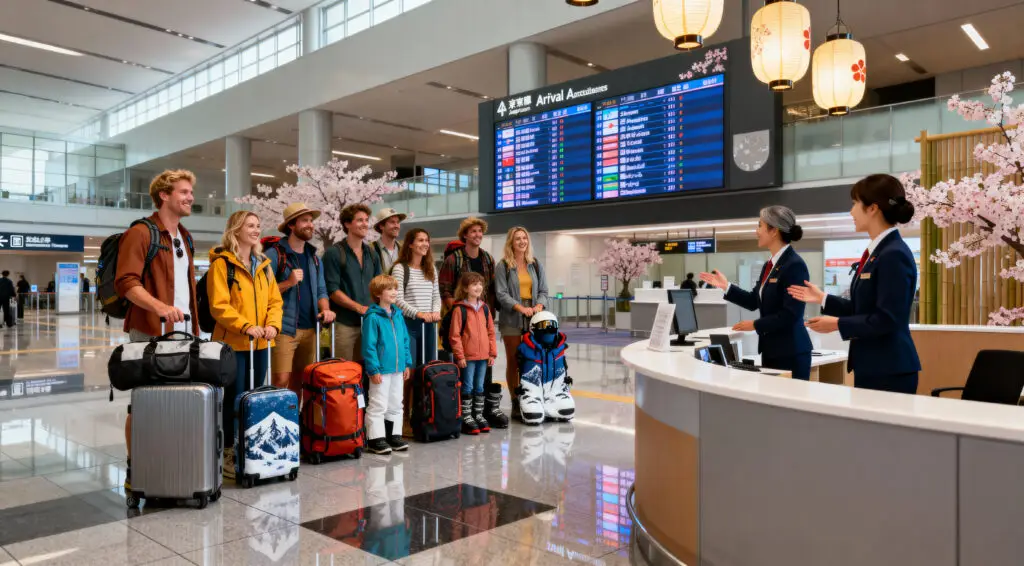Australian Visitors to Japan Surpass One Million as Travel Patterns Evolve
Australia has achieved a new tourism milestone as more than one million of its citizens visited Japan in the past fiscal year, marking a historic high in bilateral travel between the two nations. The surge underscores Japan’s growing appeal as a year-round destination and signals changing travel behaviors among Australian tourists.
According to the Japan National Tourism Organization (JNTO), the milestone was reached between July 2024 and June 2025, when Japan overtook the United States to become the third-most popular overseas destination for Australians. The number of visitors grew 28 percent compared with the previous year, showing no signs of slowing momentum.
Longer Stays and Higher Spending Reflect Shifting Travel Preferences
Australian travelers are staying longer and spending more during their visits. The Japan Tourism Agency reported that Australian visitors spent an average of 382,000 yen per trip, ranking second among all foreign markets. Their average stay lasted 11 days, significantly higher than the overall inbound average of 2.8 days.
Naoki Kitazawa, Executive Director of JNTO’s Sydney office, said these trends reveal a maturing market. “Australians are exploring Japan beyond the peak winter and cherry blossom seasons,” he explained. “They are staying longer, traveling to regional areas, and engaging in more diverse cultural experiences.”
Recommended Article: Vietnam Sets New Global Benchmark With Digital and Sustainable Tourism Shift
Year-Round Interest Replaces Traditional Seasonal Peaks
While Japan was once primarily visited by Australians during December and January for snow sports or in April for cherry blossom viewing, recent data shows a steady increase in arrivals throughout the year. Off-season tourism is gaining popularity as travelers seek less-crowded experiences and affordable packages.
Expedia and Booking.com have both ranked Tokyo as the top-searched international destination for Australians, with Kyoto and Hokkaido also experiencing record accommodation demand. This growing year-round interest reflects both improved air connectivity and Japan’s global reputation for safety and hospitality.
Cultural and Family Tourism Drive Broader Engagement
Since 2015, JNTO data indicates greater diversification in activities. In 2024, 84 percent of Australians engaged in sightseeing and scenic travel, 66 percent explored Japan’s history and culture, and 63 percent visited museums and galleries—significant increases over previous years.
Family travel is another rising trend. Apartment-style hotels such as Mimaru, which operates 27 properties across Tokyo, Osaka, and Kyoto, report an unprecedented increase in bookings from Australian families seeking flexible accommodations. “We’re seeing more multigenerational travelers combining leisure with cultural education,” said Mao Mochizuki, spokesperson for Cosmos Hotel Management.
Economic and Strategic Impact on Japan’s Tourism Market
Although Australians represent only 4.2 percent of Japan’s total inbound tourist spending—estimated at 8.1 trillion yen (US$53.2 billion)—the market’s high per-capita expenditure makes it strategically important. Tourism analysts expect continued growth as airlines expand direct routes and Japan promotes regional tourism.
The Japanese government has also designated Australia as a priority source market within its inbound tourism strategy, focusing on long-haul travelers who stay longer and spend more across multiple prefectures.
Toward Sustainable and Diversified Regional Tourism
Japan’s focus now extends beyond major urban centers toward regional revitalization. Prefectures such as Nagano, Tottori, and Okinawa are attracting Australian travelers with eco-friendly resorts, local festivals, and culinary experiences. This shift aligns with Japan’s goal to distribute tourism benefits more evenly and promote sustainable development outside traditional hotspots.
Industry observers say these patterns will likely strengthen cultural ties and economic exchange between the two countries. The evolution of Australian travel behavior reflects a deeper appreciation for Japan’s culture, landscapes, and year-round tourism potential.
About the Japan National Tourism Organization
The Japan National Tourism Organization (JNTO) is responsible for promoting Japan as a premier travel destination. Through partnerships with international airlines, travel agencies, and local governments, JNTO works to enhance inbound tourism, encourage cultural exchange, and support sustainable travel initiatives.























